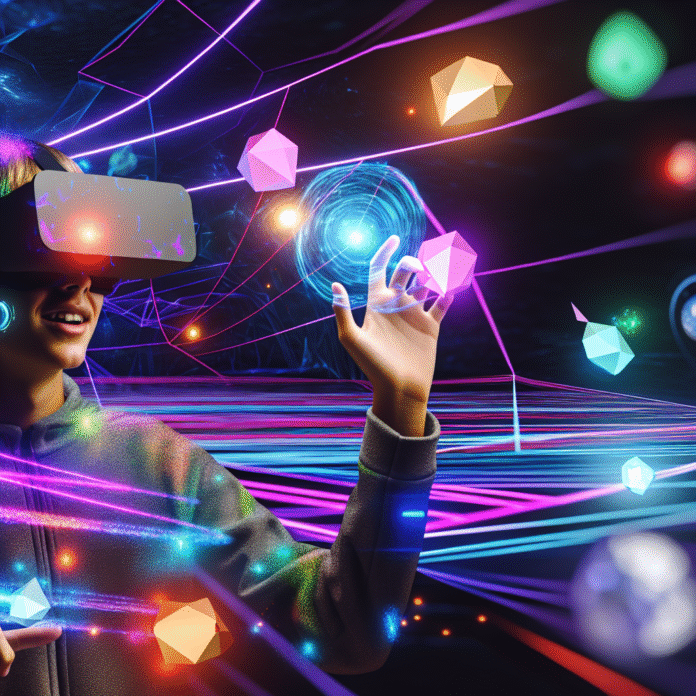Step Inside the Metaverse: Exploring MR’s Role in Virtual Engagement
Imagine a world where you can socialize, game, work, and explore all within a digital universe, blending the lines between reality and the virtual. Sounds intriguing, right? Welcome to the Metaverse, where Mixed Reality (MR) is not just an idea; it’s a game-changer for virtual engagement. Whether you’re a hardcore gamer, a casual player, or just a tech enthusiast, this vibrant digital ecosystem offers something for everyone. Let’s dive into how MR shapes our virtual interactions and enhances our experiences.
What Is the Metaverse?
The Metaverse can feel like a buzzword tossed around in tech discussions, but it represents a convergence of virtual and augmented realities, social interactions, and interconnected digital spaces. It’s not confined to single experiences like gaming; instead, it envelops multiple platforms, allowing users to inhabit various roles from gamers to creators, and even professionals. The concept promises an immersive environment where boundaries cease to exist.
To put it simply, if you’ve ever slipped on a VR headset and felt transported to another world, you’ve just brushed the surface of what the Metaverse is all about. With MRs—such as AR (Augmented Reality) and VR (Virtual Reality)—integrated deeply into various platforms, the result is a seamless blend of the physical and digital realms.
MR: The Gateway to Immersive Interaction
Mixed Reality serves as the handshake between the digital and physical worlds. Unlike traditional gaming or media consumption, MR allows users to engage in a three-dimensional space where physical objects co-exist with digital elements. This blend enhances interaction, providing a richer experience.
Consider games like Pokémon GO. Players step outside, walking in their neighborhood while searching for virtual Pokémons that appear superimposed onto the real world via their smartphone screens. This blend of the physical environment with the digital creates a more engaging experience than traditional gaming confined to a screen.
Real-World Uses of MR in the Metaverse
MR isn’t just for gamers; it has far-reaching applications across various sectors. Here’s how some industries are leveraging this technology:
- Education: Imagine students visiting a virtual museum, walking amongst ancient artifacts, or using a digital model of the solar system to understand planetary motion. Schools are starting to implement MR tools to enhance learning and make complex subjects more accessible.
- Healthcare: Surgeons are now using MR for training, simulating operations on digital twins of patients. This allows them to practice procedures without any real-world consequence. It helps in honing their skills while ensuring optimal outcomes in actual surgeries.
- Real Estate: Potential buyers can take a virtual tour of properties, seeing how their furniture will fit in. MR enables immersive walkthroughs that help them make informed choices without leaving their homes.
Gaming: The Heart of the Metaverse
The gaming industry has embraced MR wholeheartedly. Titles like Half-Life: Alyx and Beat Saber transport players into richly detailed virtual worlds where every move feels natural and intuitive. Let’s break down why MR gaming is such a hit:
- Immersion: When you can physically interact with your gaming environment, it creates a sense of being ‘there’ that flat screens simply can’t match.
- Social Interaction: Multiplayer MR games allow players to form communities, strategize together, and engage in activities that forge real connections—kinda like being in a virtual pub where you all just happen to be battling monsters.
- Creativity: Platforms like Roblox and Fortnite encourage users to build their own worlds, allowing for endless creativity. MR technology enhances the building process, making it more intuitive and engaging.
Challenges in the MR Metaverse
While the Metaverse and MR bring exciting possibilities, they also face hurdles. The most evident is accessibility. High-end gear needed for MR experiences can be costly, limiting the audience. Furthermore, ensuring user-friendly interfaces is crucial. A steep learning curve can deter users from immersing themselves in this novel environment.
Privacy and security also pose significant challenges. As users engage in digital spaces, data privacy becomes paramount. Companies must responsibly manage user information while providing a secure environment. This not only includes safeguarding personal data but also ensuring users feel safe while engaging with others online.
The Future of Engagement in the Metaverse
Looking ahead, the integration of MR into the Metaverse is here to stay. Innovations will continue to emerge, enhancing user experiences and engagement levels. Companies are heavily investing in research and development, hinting at thrilling advances poised to redefine our digital interactions. Imagine attending a concert that feels real or participating in a virtual conference that feels just as immersive as being there in person.
The potential applications are limitless. As technology becomes increasingly affordable and accessible, we may find ourselves participating in experiences that were once purely figments of our imagination. The future could hold an interconnected universe where barriers blur, and our digital lives complement our physical existence.
Closing Thoughts
The Metaverse, coupled with MR, is set to change how we connect, learn, and enjoy entertainment. From immersive gaming experiences to revolutionary applications in education and healthcare, it’s more than just a trend; it’s the foundation for our digital future. So strap on your VR headset, step into this new frontier, and get ready to engage with the world in ways you never thought possible.
As you navigate through the evolving landscapes of the Metaverse, remember: every interaction shapes a part of your experience. Embrace it, explore it, and enjoy the limitless possibilities it offers.

